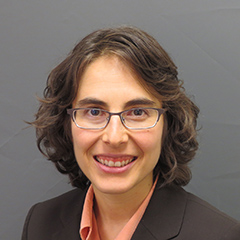Five years ago, during my time working for a state Medicaid agency, I was asked to help integrate supportive housing services into the state’s Medicaid program. It was an exciting assignment that presented an opportunity to help people with addiction, mental illness, disability, or other chronic medical conditions who qualified for Medicaid find and maintain housing. However, there were various federal Medicaid authorities from which to choose, and it took me months to learn the pros and cons of each option. To help state policymakers shorten the learning curve, I’ll briefly explain the major alternatives for addressing housing insecurity or other health-related social needs (HRSN) through Medicaid, and offer some tips on how to choose among them.
Policy options to cover HRSN services
There are three common federal Medicaid authorities that enable states to offer HRSN services to Medicaid enrollees. They can be used alone or in combination with each other. (For additional policy options, see the Centers for Medicare & Medicaid Services’ (CMS’s) 2021 State Health Official letter on the subject.)
- Section 1915 home and community-based services (HCBS) waivers and state plan options. Section 1915 of the Social Security Act (SSA) includes several authorities for states to offer HCBS to individuals who need help with activities of daily living due to age or disability. As CMS outlined in the 2021 State Health Official letter, states can offer multiple services to address HRSN using section 1915 HCBS authorities. These include pre-tenancy and tenancy-sustaining services, assistance with one-time community transition costs, home accessibility modifications, home-delivered meals, nonmedical transportation, supported employment, case management, and other services. However, federal law prohibits coverage of “room and board,” which refers to rent, utilities, and all meals.
- Managed Care In Lieu of Services (ILOS). In a January 2023 State Medicaid Director letter (SMDL), CMS described how states can enable Medicaid managed care plans to provide services to their members to address HRSN that substitute for services (or service settings) covered by the state plan. These services, known as ILOS, can be preventive in nature if providing them reduces the likelihood of future costly care. For example, to prevent asthma-related emergency department visits, managed care plans can purchase air conditioners for enrollees with asthma. CMS requires states to ensure that ILOS are medically appropriate, cost-effective, and voluntary for beneficiaries.
- Section 1115 demonstrations. Under Section 1115 of the Social Security Act, states may test new approaches to providing Medicaid benefits as long as they are consistent with the overall goals of the Medicaid program and expected to be budget neutral to the federal government. In 2022, CMS announced a new framework for section 1115 demonstrations that address HRSN. States can offer nutrition supports, housing supports including rent or temporary housing for up to six months, and case management to help beneficiaries obtain services that address HSRN. Unlike section 1915 HCBS and managed care ILOS, section 1115 demonstrations can also fund HRSN infrastructure, such as electronic referral systems or other technologies; workforce development; development of business or operational practices; and outreach, education, and stakeholder convening. The state will not have to offset approved HRSN expenditures with savings.
How to choose the right option
When choosing how to cover HRSN services as a state Medicaid official, you should consider which options will match the intended population, the types of services to be offered, and other program features. Start by answering the following questions:
- Who will be eligible? Under section 1915 HCBS authority, the eligible population must need assistance with activities of daily living, based on an assessment of their functional needs. If you do not plan to limit HRSN interventions to individuals who require functional needs supports, consider using section 1115 or ILOS authority. In a section 1115 demonstration, eligibility for HRSN services is defined by social risk factors such as homelessness or food insecurity and clinical criteria such as a high-risk pregnancy or diabetes. Under managed care ILOS, states must identify clinically-oriented eligibility criteria to ensure services are medically appropriate.
- What services will be covered? Section 1915 HCBS and managed care ILOS cannot cover the cost of “room” (rent and utility assistance) or “board” (all three meals per day), but section 1115 demonstrations can cover such costs (within time limits). For allowable nutrition and housing services under each authority, see CMS’s HRSN coverage table.
- Will the success of the HRSN intervention require Medicaid funding for new information technology, workforce training, or other infrastructure? Through section 1115 authority, up to 15 percent of HRSN expenditures can be spent on HRSN infrastructure (see a 2023 CMCS Informational Bulletin). Regardless of the authority used for HRSN services, data integration and information sharing systems might qualify for up to a 90 percent federal match, described in the 2021 State Health Official letter.
- Will HRSN services be offered through a fee-for-service (FFS) system, managed care, or both? If the state wants to provide services to FFS beneficiaries, it cannot rely exclusively on managed care ILOS.
- What is your state capacity for application and oversight? The complexity of applications and state reporting and oversight requirements vary for each authority. These are generally simpler for section 1915(i) or (k) state plan amendments (a one-time, pre-print application) and more involved for section 1115 demonstrations (regular monitoring and independent evaluation; reapplication after 5 years). ILOS reporting requirements increase if projected costs are more than 1.5 percent of total managed care capitation payments, as described in the SMDL.
- Will HRSN services be offered to all Medicaid beneficiaries who qualify, or will your state start with a geographically limited pilot or cap enrollment? The latter options require a waiver of statewideness or comparability, which are available under section 1115 or 1915(c) authority, but may or may not be available for ILOS.
- Can the state meet additional requirements? The ILOS SMDL and the framework for section 1115 demonstrations that address HRSN describe requirements associated with each authority. Notably, as a condition of section 1115 HRSN demonstration approval, states must increase provider reimbursement rates for primary care, obstetrics, and behavioral health if they are less than 80 percent of Medicare rates.
Some states may want to combine authorities. For example, California offers 12 services to address HRSN through ILOS authority, and two additional services that could be considered “room and board” through 1115 authority. California’s section 1115 demonstration also includes HRSN infrastructure funding.
Every state’s situation is unique, but as you begin your research, these questions can help your state decide which Medicaid authority is best to cover the specific HSRN services and populations it wants to address. By sharing my five-year learning curve, I hope I can shorten yours!
With thanks to Mathematica colleagues Ilse Argueta, Debra Lipson, and Cheryl Powell for their input.



